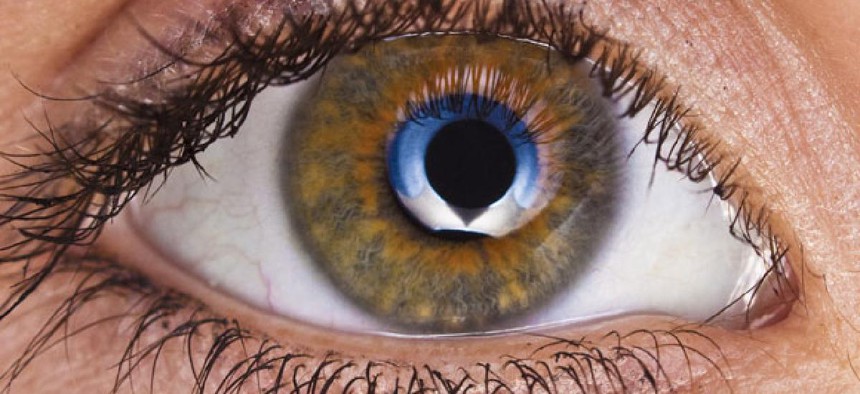FBI and DHS team up to nab border intruders with iris recognition

MountainHardcore/Shutterstock.com
Feds to build upon controversial immigrant fingerprinting program with eye pattern matching.
The FBI is partnering with the Homeland Security Department to identify border trespassers by exchanging digital eye scans of booked offenders, bureau officials said.
Iris recognition -- which matches a digital image of the unique, colored portion of an individual’s eye against archived photos -- quickly ensures authorities have fingered the right crook, advocates say. Critics say iris capture invades privacy and wrongfully pulls immigrants into the deportation system.
“We’re working closely with border control” on iris matching projects, Brian Edgell, unit chief for the FBI’s enhanced biometric system, said during an interview on Thursday. The FBI’s traditional fingerprinting system is transforming into a $1 billion multi-trait repository called the Next Generation Identification program.
By law, the biometric databases at DHS and the FBI must be compatible. Immigration authorities, through a controversial fingerprinting program called Secure Communities, cross-check foreigners’ prints against prints from booked individuals.
Iris recognition is a logical extension of the program, Edgell told Nextgov after speaking at an information-sharing symposium hosted by the IJIS Institute. “Secure Communities is a Homeland Security Department program,” he said. “I think iris is a way we can begin to build upon what we’re doing.”
The FBI gradually is collecting iris scans from state and local prison wardens who use the technology to track inmates. DHS increasingly is testing iris recognition at border stations to identify suspected illegal aliens, according to department officials.
Immigrant rights groups and privacy activists are not keen on the idea of digitizing and storing various physical characteristics of foreigners, some of whom, they argue, are mistakenly arrested and then extradited.
In addition to iris images, the new FBI biometric system is slated to ingest and search by late 2014 pictures of faces, scars, tattoos and other skin markings.
In June 2012, representatives from the National Day Laborer Organizing Network, the New York State Defenders Association, and the Cardozo Immigration Justice Clinic gathered at a federal advisory board meetingto confront the FBI about its role in what they call a “massive deportation program.”
FBI officials stress that Secure Communities is managed by DHS, and the only irises saved in the bureau’s system are from individuals who have come into contact with law enforcement.
Iris recognition also has critics in the computer science field, who note eye pattern files can be duplicated by hackers and also degrade over time.
Officials for BI2 Technologies, a company that manages a nationwide database of iris images, say the files are encrypted for protection. “Standing alone, biometric templates cannot be reconstructed, decrypted, reverse-engineered or otherwise manipulated to reveal a person's identity,” states the website for the firm, which has worked with FBI program managers.
(Image via MountainHardcore /Shutterstock.com)






